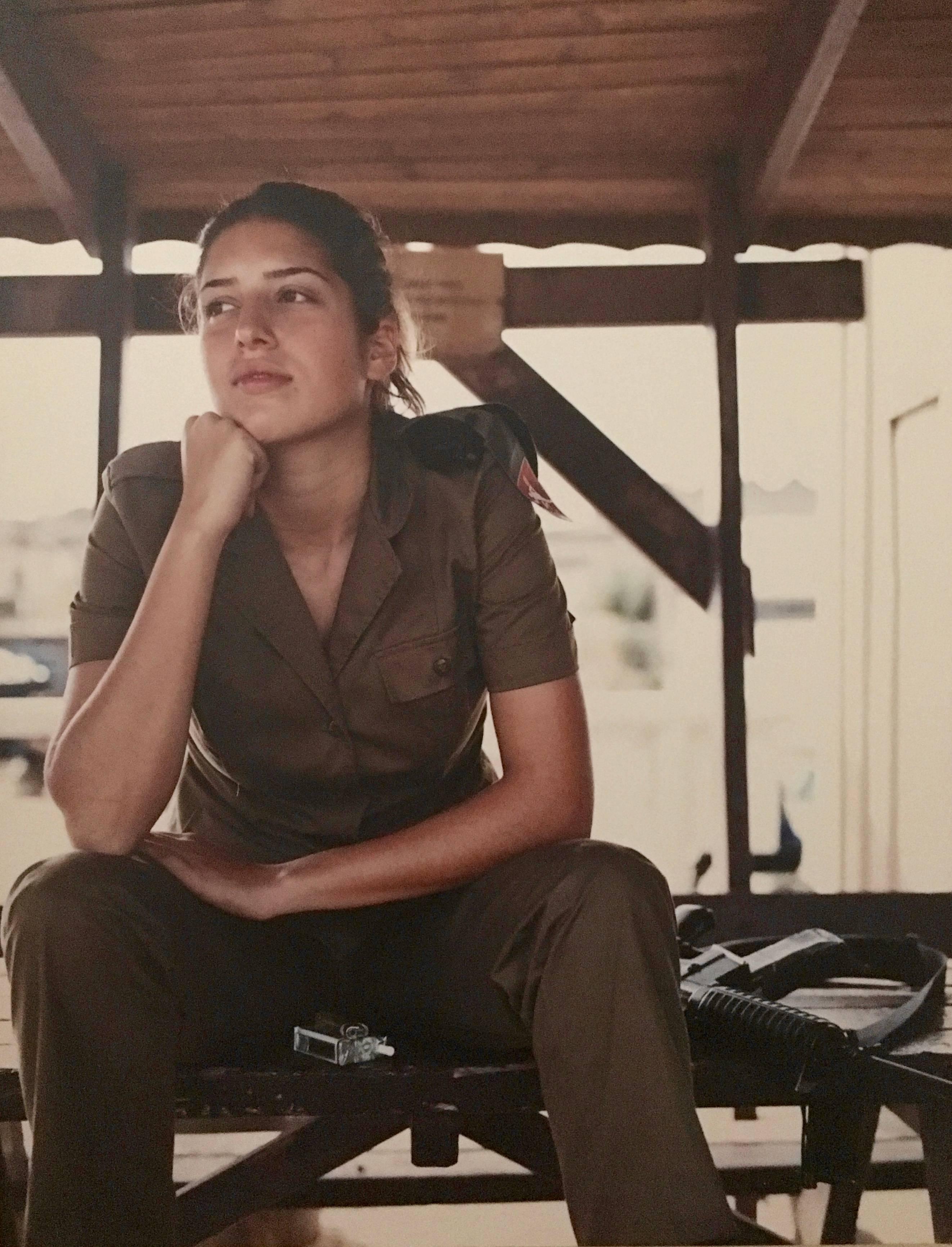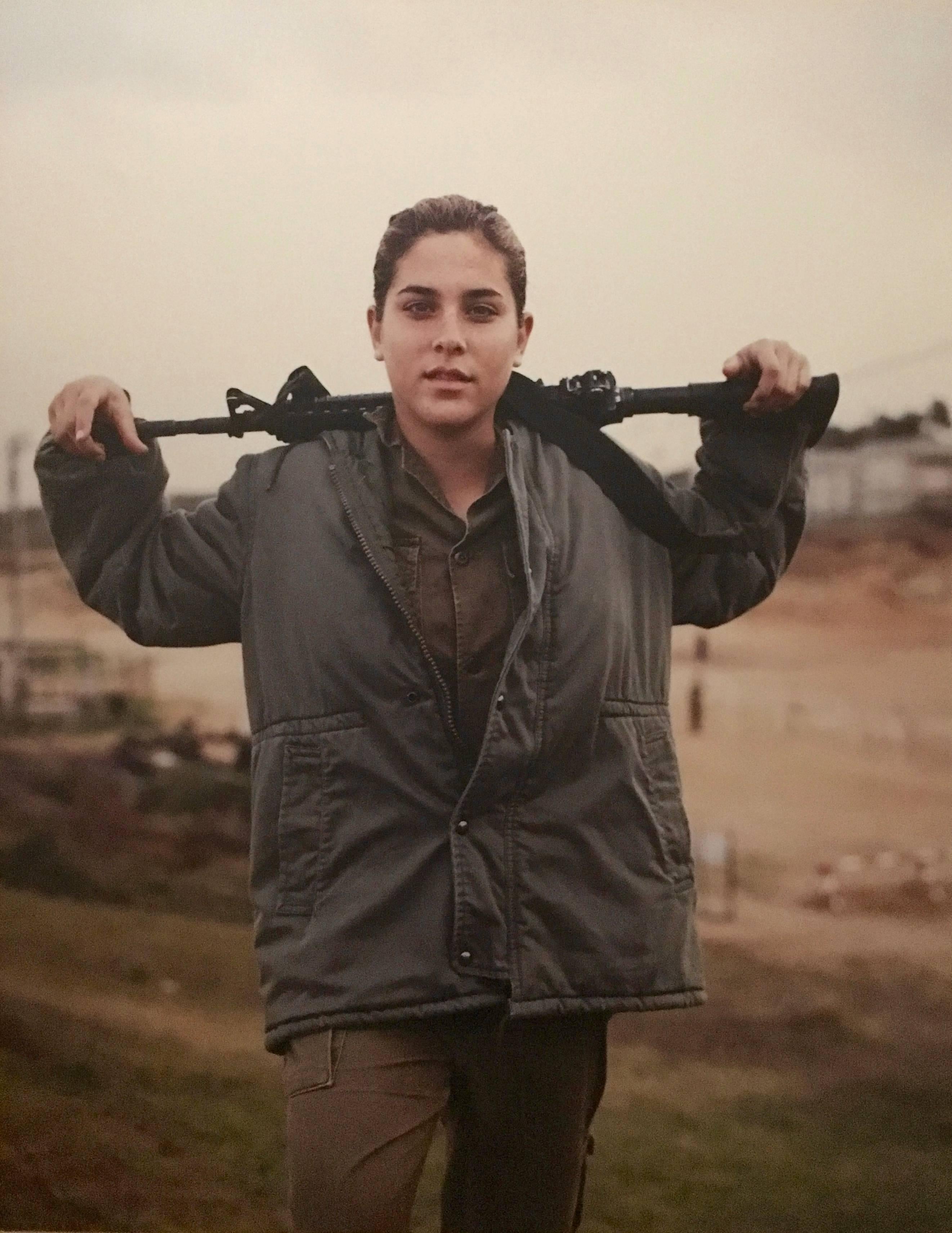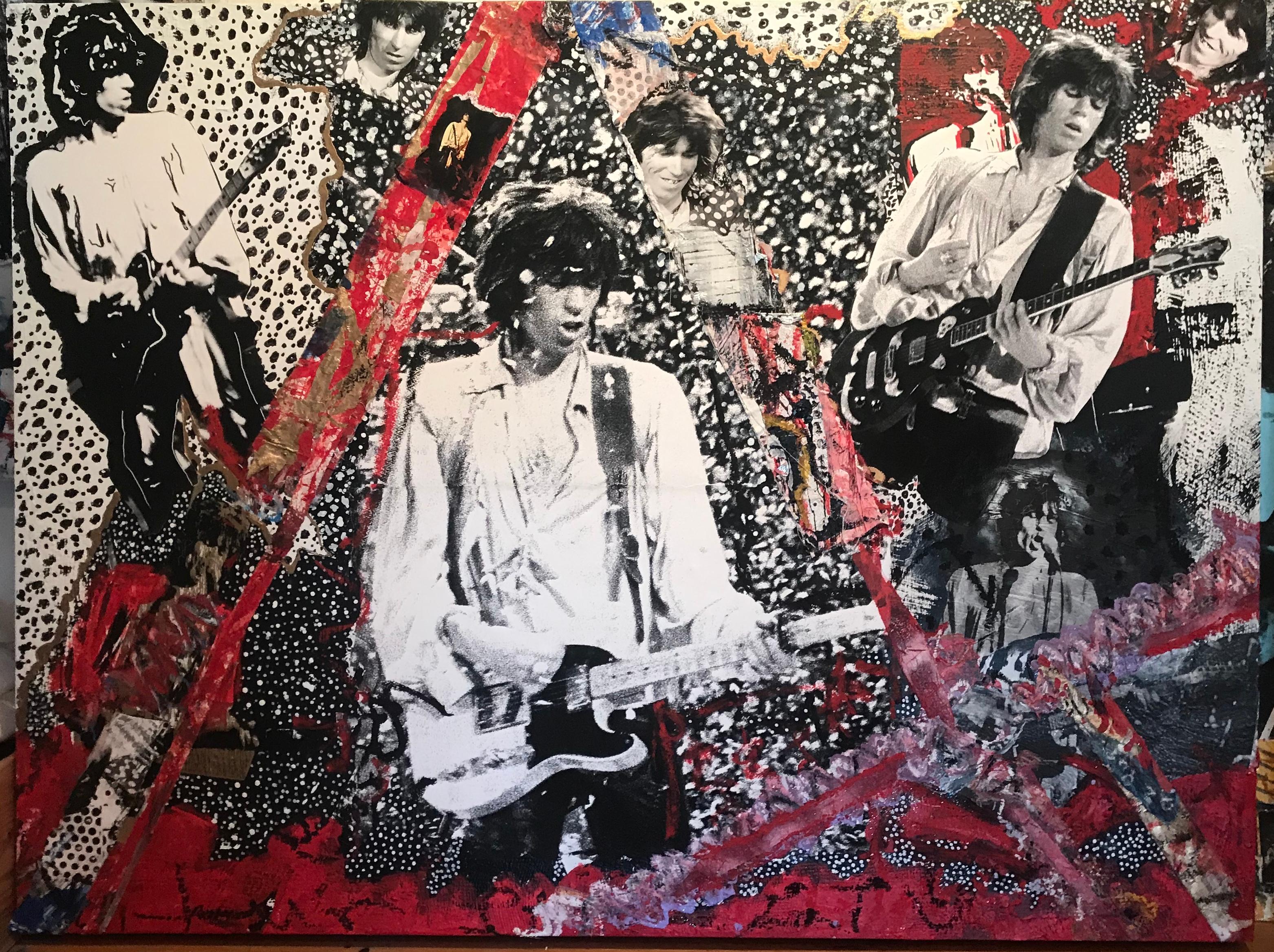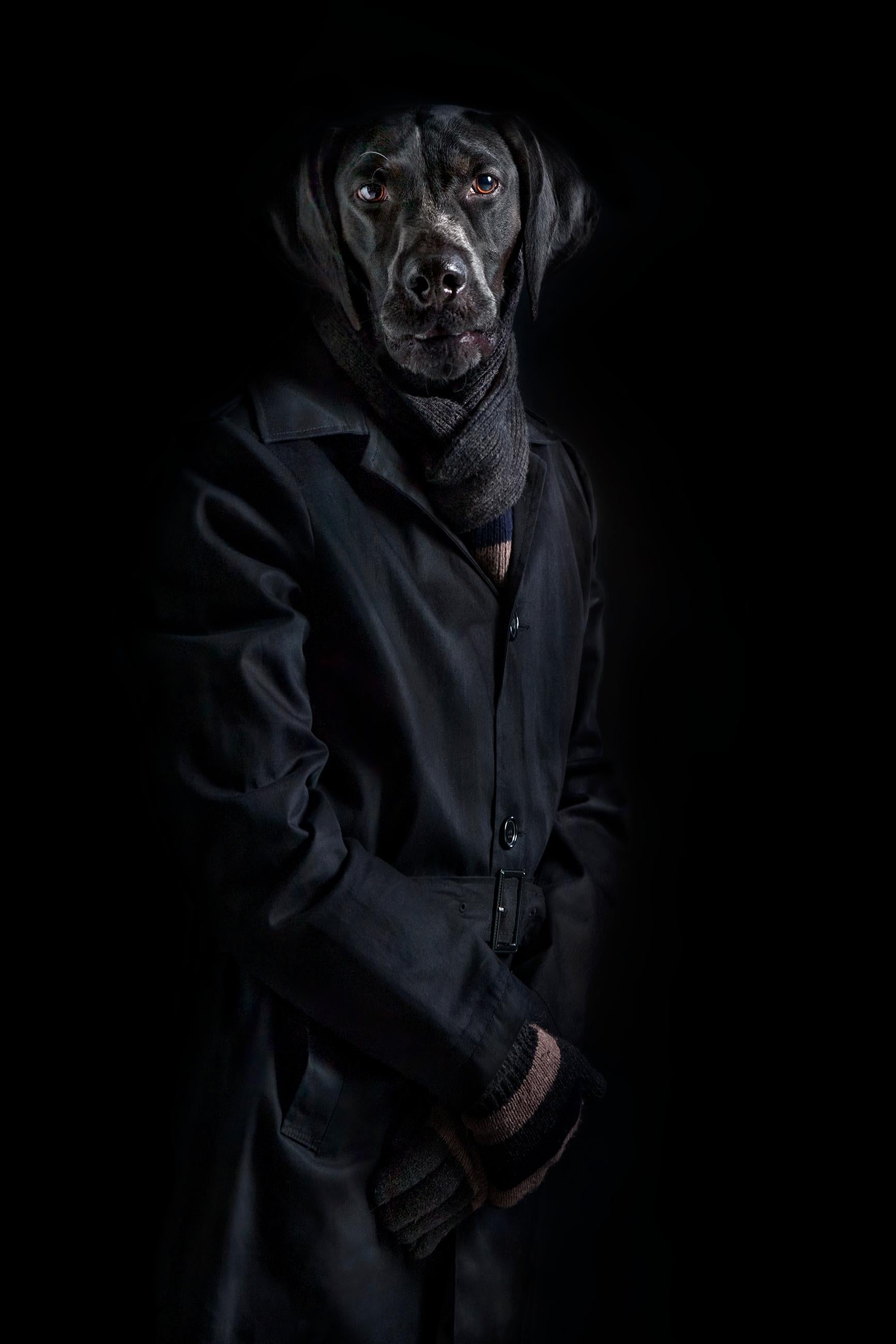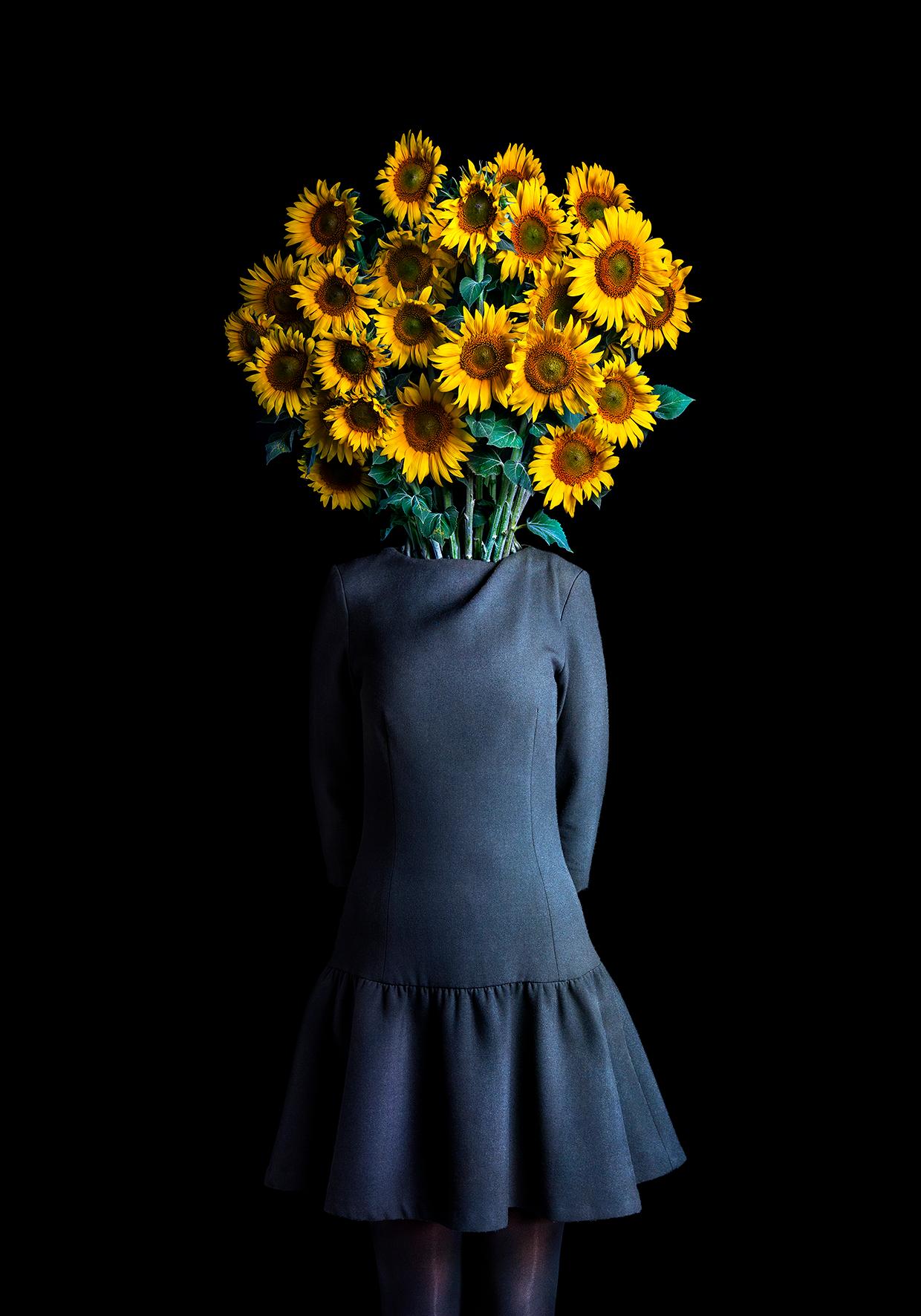Items Similar to WOMEN OF THE ISRAEL DEFENSE FORCES Large Photo NETA
Want more images or videos?
Request additional images or videos from the seller
1 of 8
Ashkan SahihiWOMEN OF THE ISRAEL DEFENSE FORCES Large Photo NETA
About the Item
"Women of the IDF" Large Exhibition color Photograph
30 x 40 inches, mounted on masonite and laminated.
Edition of 4 + 2 artists proof. minor dings and bumps to edges Born in Tehran, Iran, Ashkan Sahihi moved with his family to West Germany at the age of seven. Although he began taking photographs as a teenager, Sahihi traces the beginning of his professional trajectory to New York in 1987, a thriving “pop culture metropolis” where he could do the kind of photography work that he wanted to do, exploring the underbelly of the society around him. Taking assignments from German publications such as the Süddeutsche Zeitung Magazine, Der Spiegel, Dummy and GEO, he photographed subjects like prisoners on death row, players in the hip-hop scene, and the downtown art scene of New York. Neither black nor white, an insider among outsiders, he found himself able to navigate spaces and dynamics that others might have had difficulty entering. He considered this both a privilege and an obligation – to visit these places and tell these stories. His success led to commissions from American publications as well, including the New York Times Magazine, the New Yorker, Rolling Stone, and Vogue.
Put off by the limitations of photojournalism (the expectation that he would illustrate the writer’s perspective rather than author a narrative of his own), Sahihi began to embark on independent, highly compact conceptual series. His main goal in these series has been to drive forward public discourse on topics he believes have not provoked enough or the right kind of discussion: drugs, gender in the media, women in the military, etc. His portraits draw on a familiar visual language – often seated subjects before a neutral backdrop – but push the viewer to feel and think about entirely new things. Although he constantly challenges the comfort level of both the viewer and the subject, Sahihi never removes himself from the line of fire; all of his work requires the artist to immerse himself in uncomfortable situations and challenge his own emotional fortitude.
Photographic Series
In the “Face Series”, latex-gloved hands manipulate the subjects’ features, stretching, pushing, squeezing, pinching at the whim of external direction – from the artist? The customer? The public? The “Hypnosis Series” comprises 8 portraits of hypnotized subjects each experiencing a single emotion, e.g. helplessness, withholding/anger, or regret. In a society that rewards the suppression of such naked emotion, the purity of these depictions is arresting.
In 2006, Sahihi photographed himself in the homes and with the families of six ex-girlfriends and one ex-wife, imposing himself more or less awkwardly on the constellations that emerged after he had exited their lives (“Exes Series”).
For Sahihi’s most well-known work, the “Drug Series,” he convinced 11 non–drug users to consume a particular drug, then took their portraits over the course of their trips. The series was born out of Sahihi’s frustration with the hypocrisy of the political conversation about drugs in the United States. “By attempting to present an objective image of drug use, the artist addresses the cultural politics that allow our society to simultaneously glamorize the ‘drug look’ in fashion magazines and the entertainment industry and meanwhile turn a blind eye to the complicated, and vast, problem of drug abuse.” Sahihi has exhibited this series at MoMA PS1 New York in 2001, in Dresden in 2008, and alongside his installation “100 Million in Ready Cash."
Sahihi’s dense explorations through small photographic series include “Women of the IDF," portraits of female Israeli soldiers; “Camp X-Ray Guantanamo Bay,” black-and-white landscapes of barbed wire and watch towers; the “Cum Series”; the “Armpit Series”; and the “Kiss Series," in which the artist photographed himself kissing 18 women and men of various ethnicities. Sahihi’s photographs of the Occupy Wall Street movement constitute his latest series of this kind.
In recent years, Sahihi has lived and worked in New York, Istanbul, the Middle East, and London, producing bodies of work in each place that attempt to engage the political discourse he deems lacking in substance.
Exhibitions
Andrea Rosen Gallery, NY, USA (2000)
Basel Art Fair 31, Switzerland (2000)
MoMA PS1, NY, USA (solo and group shows, 2001 and 2006)
John Connelly Presents, NY, USA
Akureyri Museum, Iceland
Akademie der Künste, Berlin, Germany
Axel Raben Gallery, NY, USA
Macro, Rome, Italy
Schloss Morsbroich, Leverkusen, Germany
Städtische Galerie, Dresden, Germany
Galerie am Körnerpark, Berlin, Germany (2015)
Galerie Springer, Berlin, Germany (2015)
Kehrer Galerie, Berlin, Germany (2016)
- Creator:Ashkan Sahihi (1963, Iranian)
- Dimensions:Height: 40 in (101.6 cm)Width: 31 in (78.74 cm)Depth: 1 in (2.54 cm)
- Medium:
- Period:
- Condition:minor bumps and and dents to edges.
- Gallery Location:Surfside, FL
- Reference Number:1stDibs: LU38211256722
About the Seller
4.9
Platinum Seller
These expertly vetted sellers are 1stDibs' most experienced sellers and are rated highest by our customers.
Established in 1995
1stDibs seller since 2014
1,559 sales on 1stDibs
Typical response time: 1 hour
- ShippingRetrieving quote...Ships From: Surfside, FL
- Return PolicyA return for this item may be initiated within 3 days of delivery.
More From This SellerView All
- Large Color Photograph "Women of the IDF" Ashkan SahihiBy Ashkan SahihiLocated in Surfside, FL"Women of the IDF" Large Exhibition color Photograph 30 x 40 inches, mounted on masonite and laminated. Edition of 4 + 2 artists proof. minor dings and bumps to edges Born in Tehran, Iran, Ashkan Sahihi moved with his family to West Germany at the age of seven. Although he began taking photographs as a teenager, Sahihi traces the beginning of his professional trajectory to New York in 1987, a thriving “pop culture metropolis” where he could do the kind of photography work that he wanted to do, exploring the underbelly of the society around him. Taking assignments from German publications such as the Süddeutsche Zeitung Magazine, Der Spiegel, Dummy and GEO, he photographed subjects like prisoners on death row, players in the hip-hop scene, and the downtown art scene of New York. Neither black nor white, an insider among outsiders, he found himself able to navigate spaces and dynamics that others might have had difficulty entering. He considered this both a privilege and an obligation – to visit these places and tell these stories. His success led to commissions from American publications as well, including the New York Times Magazine, the New Yorker, Rolling Stone, and Vogue. Put off by the limitations of photojournalism (the expectation that he would illustrate the writer’s perspective rather than author a narrative of his own), Sahihi began to embark on independent, highly compact conceptual series. His main goal in these series has been to drive forward public discourse on topics he believes have not provoked enough or the right kind of discussion: drugs, gender in the media, women in the military, etc. His portraits draw on a familiar visual language – often seated subjects before a neutral backdrop – but push the viewer to feel and think about entirely new things. Although he constantly challenges the comfort level of both the viewer and the subject, Sahihi never removes himself from the line of fire; all of his work requires the artist to immerse himself in uncomfortable situations and challenge his own emotional fortitude. Photographic Series In the “Face Series”, latex-gloved hands manipulate the subjects’ features, stretching, pushing, squeezing, pinching at the whim of external direction – from the artist? The customer? The public? The “Hypnosis Series” comprises 8 portraits of hypnotized subjects each experiencing a single emotion, e.g. helplessness, withholding/anger, or regret. In a society that rewards the suppression of such naked emotion, the purity of these depictions is arresting. In 2006, Sahihi photographed himself in the homes and with the families of six ex-girlfriends and one ex-wife, imposing himself more or less awkwardly on the constellations that emerged after he had exited their lives (“Exes Series”). For Sahihi’s most well-known work, the “Drug Series,” he convinced 11 non–drug users to consume a particular drug, then took their portraits over the course of their trips. The series was born out of Sahihi’s frustration with the hypocrisy of the political conversation about drugs in the United States. “By attempting to present an objective image of drug use, the artist addresses the cultural politics that allow our society to simultaneously glamorize the ‘drug look’ in fashion magazines and the entertainment industry and meanwhile turn a blind eye to the complicated, and vast, problem of drug abuse.” Sahihi has exhibited this series at MoMA PS1 New York in 2001, in Dresden in 2008, and alongside his installation “100 Million in Ready Cash." Sahihi’s dense explorations through small photographic series include “Women of the IDF," portraits of female Israeli soldiers...Category
Early 2000s Portrait Photography
MaterialsLaminate, Masonite
- WOMEN OF THE IDF Large color Photograph LITALBy Ashkan SahihiLocated in Surfside, FL"Women of the IDF" Large Exhibition color Photograph 30 x 40 inches, mounted on masonite and laminated. Edition of 4 + 2 artists proof. minor dings and bumps to edges Born in Tehran, Iran, Ashkan Sahihi moved with his family to West Germany at the age of seven. Although he began taking photographs as a teenager, Sahihi traces the beginning of his professional trajectory to New York in 1987, a thriving “pop culture metropolis” where he could do the kind of photography work that he wanted to do, exploring the underbelly of the society around him. Taking assignments from German publications such as the Süddeutsche Zeitung Magazine, Der Spiegel, Dummy and GEO, he photographed subjects like prisoners on death row, players in the hip-hop scene, and the downtown art scene of New York. Neither black nor white, an insider among outsiders, he found himself able to navigate spaces and dynamics that others might have had difficulty entering. He considered this both a privilege and an obligation – to visit these places and tell these stories. His success led to commissions from American publications as well, including the New York Times Magazine, the New Yorker, Rolling Stone, and Vogue. Put off by the limitations of photojournalism (the expectation that he would illustrate the writer’s perspective rather than author a narrative of his own), Sahihi began to embark on independent, highly compact conceptual series. His main goal in these series has been to drive forward public discourse on topics he believes have not provoked enough or the right kind of discussion: drugs, gender in the media, women in the military, etc. His portraits draw on a familiar visual language – often seated subjects before a neutral backdrop – but push the viewer to feel and think about entirely new things. Although he constantly challenges the comfort level of both the viewer and the subject, Sahihi never removes himself from the line of fire; all of his work requires the artist to immerse himself in uncomfortable situations and challenge his own emotional fortitude. Photographic Series In the “Face Series”, latex-gloved hands manipulate the subjects’ features, stretching, pushing, squeezing, pinching at the whim of external direction – from the artist? The customer? The public? The “Hypnosis Series” comprises 8 portraits of hypnotized subjects each experiencing a single emotion, e.g. helplessness, withholding/anger, or regret. In a society that rewards the suppression of such naked emotion, the purity of these depictions is arresting. In 2006, Sahihi photographed himself in the homes and with the families of six ex-girlfriends and one ex-wife, imposing himself more or less awkwardly on the constellations that emerged after he had exited their lives (“Exes Series”). For Sahihi’s most well-known work, the “Drug Series,” he convinced 11 non–drug users to consume a particular drug, then took their portraits over the course of their trips. The series was born out of Sahihi’s frustration with the hypocrisy of the political conversation about drugs in the United States. “By attempting to present an objective image of drug use, the artist addresses the cultural politics that allow our society to simultaneously glamorize the ‘drug look’ in fashion magazines and the entertainment industry and meanwhile turn a blind eye to the complicated, and vast, problem of drug abuse.” Sahihi has exhibited this series at MoMA PS1 New York in 2001, in Dresden in 2008, and alongside his installation “100 Million in Ready Cash." Sahihi’s dense explorations through small photographic series include “Women of the IDF," portraits of female Israeli soldiers...Category
Early 2000s Portrait Photography
MaterialsMasonite
- Rare Vintage Silver Gelatin and Polaroid Photograph Prints Ansel Adams PortraitBy Ansel AdamsLocated in Surfside, FLRare Vintage Silver Gelatin and Polaroid Photograph Prints in Polaroid Photo Album. These measure 10 x 8 4.25 x 3.25. it is a folder titled on it Custom Print by Polaroid the album i...Category
Mid-20th Century American Modern Black and White Photography
MaterialsPolaroid
- Large Silver Gelatin Russian Photograph Potsdam Conference Winston ChurchillBy Samariy GurariyLocated in Surfside, FLPotsdam conference meeting depicting Josef Stalin, Winston Churchill and Harry Truman (not visible) at the conference table, gelatin silver print, date of printing unknown, 16-1/2" x 22-3/4" sheet, date of printing unknown. Provenance: acquired from the estate of photographer Samariy Gurariy. Samariy Gurariy (1916 - 1998) was a Soviet Union photojournalist and photographer. He was born to a Jewish family in Kremenchug Poltavs'ka moving to Moscow in 1921. He began his career in 1934, photographing for the illustration department of the Moscow newspaper Izvestia. He also did work for Pravda, Tass and Gaz. He became the favorite photo correspondent of Stalin and was present and working at many of the most historic events of Stalin's career, such as the Yalta and Potsdam Conferences as well as covering the Soviet-Nazi front during the Second World War. According to writer George Alexander...Category
20th Century Realist Black and White Photography
MaterialsSilver Gelatin
- Vintage Silver Gelatin Print Photograph Gary Cooper, His Last Photo, SignedLocated in Surfside, FLThis is a vintage black and white photograph (shot in 1961 and printed in 1975) of famed actor Gary Cooper by internationally renowned PhotographerSherman Weisburd. This Vintage photograph was developed from the original negative and is the last portrait photo taken before his death. This photo was selected as a possible cover for Good Housekeeping Magazine. It is hand signed in marker, lower right by Sherman Weisburd. Sherman Weisburd, known for his album cover photos of the 1960s and '70s and advertising work of the early '70s. Photographer for Playboy Magazine, TV Guide (Sonny & Cher), and Viva Magazine. Grammy nominated for his photo of Charles Aznavour, He shot Arlo Guthrie for the cover of Alice's Restaurant, Betty Ford for Ingenue magazine, Marilyn Monroe for Modern Screen magazine. He also shot Ashford & Simpson and was a cinematographer for Universal and Paramount pictures. Gary Cooper was an Oscar winning American actor. A major movie star from the end of the silent film era through to the end of the golden age of Classical Hollywood. Throughout his career, he sustained a screen persona that represented the ideal American hero. In the early 1930s, he expanded his heroic image to include more cautious characters in adventure films and dramas such as A Farewell to Arms (1932) and The Lives of a Bengal Lancer (1935). During the height of his career, Cooper portrayed a new type of hero—a champion of the common man—in films such as Mr. Deeds Goes to Town (1936), Meet John Doe (1941), Sergeant York (1941), The Pride of the Yankees (1942), and For Whom the Bell Tolls (1943). In the postwar years, he portrayed more mature characters at odds with the world in films such as The Fountainhead (1949) and High Noon (1952). In his final films, Cooper played non-violent characters searching for redemption in films such as Friendly Persuasion (1956) and Man of the West (1958). Cooper had a series of romantic relationships with leading actresses, beginning in 1927 with Clara Bow, who advanced his career by helping him get one of his first leading roles in Children of Divorce In 1929, while filming The Wolf Song, Cooper began an intense affair with Lupe Vélez...Category
1960s American Modern Portrait Photography
MaterialsSilver Gelatin
- Vintage Silver Gelatin Photograph Print, Girls on a Beach Photo, Two Man ShowLocated in Surfside, FLRichard Lebowitz, b. 1937, American, (RISD Faculty 1964-1995, Photography; Professor Emeritus) Tom Young, b. 1951, American, (RISD MFA 1977, Photography) TIT...Category
1980s American Modern Black and White Photography
MaterialsPhotographic Paper, Silver Gelatin
You May Also Like
- Keith Snow StormBy Steve JoesterLocated in New York, NYMixed Media on wood featuring the infamous Keith Richards. Photographed by Joester. About the Artist: Steve Joester is a British-born Rock & Roll photographer and mixed media a...Category
2010s Contemporary Figurative Paintings
MaterialsMixed Media, Photographic Film, Masonite
- IGGY POP - FROM THE ALBUM COVER SOLDIER 1980, STUDIO PORTRAIT (1979)Located in London, GBIGGY POP - FROM THE ALBUM COVER SOLDIER 1980, STUDIO PORTRAIT (1979), 1979 Archival Pigment Print, Framed Image size 30 x 30 cm Frame: 55 x 45.5 cm © Brian Griffin "I remember this...Category
1970s Performance Portrait Photography
MaterialsGlass, Wood, Photographic Film, Photographic Paper, Color, Archival Pigment
- Second Skin Nº 1 Black Dog Surrealist Portrait Miguel VallinasBy Miguel VallinasLocated in Madrid, ESSecond Skin is the fist serie of Miguel Vallinas' surreal images that reconsider the human form. Second Skin explores the concept of identity and personal choice with a connection wi...Category
2010s Contemporary Portrait Photography
MaterialsWood
- Roots Nº 30 Yellow Sunflowers Surrealist Portrait Miguel VallinasBy Miguel VallinasLocated in Madrid, ESCeci nest pas is the third serie of Miguel Vallina' surreal images that reconsider the human form. ‘ceci n’est pas’ — meaning ‘this is not’ in french — explores the concept of identi...Category
2010s Contemporary Portrait Photography
MaterialsWood
- Ceci n'est pas Nº90 Tea Contemporary Portrait Photograph Miguel VallinasBy Miguel VallinasLocated in Madrid, ESCeci nest pas is the third serie of Miguel Vallina' surreal images that reconsider the human form. ‘ceci n’est pas’ — meaning ‘this is not’ in french — explores the concept of identi...Category
2010s Contemporary Portrait Photography
MaterialsWood
- Second Skin Nº 11 Green Duck Surrealist Portrait Miguel VallinasBy Miguel VallinasLocated in Madrid, ESSecond Skin is the fist serie of Miguel Vallinas' surreal images that reconsider the human form. Second Skin explores the concept of identity and personal choice with a connection wi...Category
2010s Contemporary Portrait Photography
MaterialsWood
